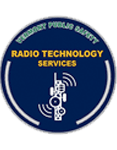RTS personnel engineer and maintain highly stable, mission critical telephone systems and voicemail for the Department of Public Safety, including the Vermont State Police and the two State 911 Public Safety Answering Points (PSAPS).
Phone Reference Materials for DPS Users
If you have questions about your phone or need assistance, please send us an email or give us a call during normal office hours (M-F 7:45 am-4:30 pm) at (802) 241-5480/241-5214. For emergencies outside of normal business hours, call the Williston PSAP at (802) 878-7111.
The DPS phone system makes use of a range of desk handsets and equipment.
Managing Your Voice Mail:
Setting up and managing your voice mail is an important part of using your Department of Public Safety phone. This First-Time User Guide will walk you through the steps to complete the initial setup of your voice mail and give you the steps to recording your greeting and retrieving messages. If you would like more detailed information on how to perform important tasks when using the Modular Messaging system, check out this Quick Reference Guide.
DPS Phone System Engineered for Reliability
A PBX (private branch exchange) is a telephone system technology used within the Department of Public Safety that connects our telephone sets to leased telephone lines that are provided by a local telephone company or public switched telephone network (PSTN). In business applications, the primary purpose of a PBX is to save the cost of requiring a dedicated telephone line for each employee. If a business has 100 employees, it would be reasonable to assume not all employees would be using their telephone at the same time. With this assumption, a company may only lease 50 telephone lines from the local telephone company and use the PBX system to share the use of these lines.
In a public safety environment cost savings are also important, however the primary purpose is reliability. In our systems we connect the PBX to both the local telephone company leased lines and the department's microwave system. With the microwave connections, if local phone company lines are unavailable, calls are routed to the headquarters PBX for processing and inter-office calling is uninterrupted. Additionally, all PBX equipment is supported by uninterruptible power systems and back up generators.
One of the latest trends in PBX phone system development is the VoIP PBX, also known as IP PBX, which uses the Internet Protocol to transmit calls. The Department of Public Safety is beginning to transition to this newer technology as it matures and legacy capabilities evolve within the IP PBX platforms.

